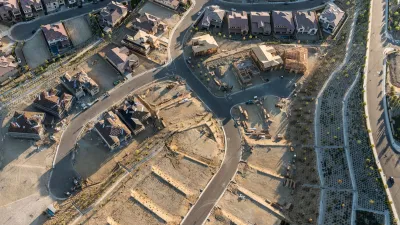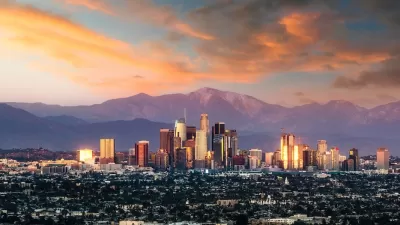The last great U.S. wilderness won't forever remain the frozen tundra imagined by residents of the Lower 48. A new report finds evidence of Alaska's transformation in the increasing frequency and intensity of wildfires around the state.
"Alaska, the great northern frontier of America, is being reshaped by climate change," according to a post by Climate Central. "While rising temperatures are altering its character and landscape, they are also bringing the ravages of wildfires."
"In the past 60 years, Alaska has warmed more than twice as fast as the rest of the country, with average temperatures up by nearly 3°F. By 2050, temperatures are projected to climb an additional 2-4 degrees, with the Arctic region seeing the most dramatic increases. These rising temperatures are expected to increase wildfire risks in Alaska, just as they have in the rest of the western U.S."
The post serves as introduction to a full research report titled The Age of Alaskan Wildfires [pdf], which is the latest in a series of reports on the same theme. The post also shares several key findings from the current report, including specific details about the increasing size and number of wildfires in Alaska.
FULL STORY: Alaska Entering New Era for Wildfires

Alabama: Trump Terminates Settlements for Black Communities Harmed By Raw Sewage
Trump deemed the landmark civil rights agreement “illegal DEI and environmental justice policy.”

Planetizen Federal Action Tracker
A weekly monitor of how Trump’s orders and actions are impacting planners and planning in America.

The 120 Year Old Tiny Home Villages That Sheltered San Francisco’s Earthquake Refugees
More than a century ago, San Francisco mobilized to house thousands of residents displaced by the 1906 earthquake. Could their strategy offer a model for the present?

San Francisco Opens Park on Former Great Highway
The Sunset Dunes park’s grand opening attracted both fans and detractors.

Oregon Legislature to Consider Transit Funding Laws
One proposal would increase the state’s payroll tax by .08% to fund transit agencies and expand service.

Housing Vouchers as a Key Piece of Houston’s Housing Strategy
The Houston Housing Authority supports 19,000 households through the housing voucher program.
Urban Design for Planners 1: Software Tools
This six-course series explores essential urban design concepts using open source software and equips planners with the tools they need to participate fully in the urban design process.
Planning for Universal Design
Learn the tools for implementing Universal Design in planning regulations.
Clanton & Associates, Inc.
Jessamine County Fiscal Court
Institute for Housing and Urban Development Studies (IHS)
City of Grandview
Harvard GSD Executive Education
Toledo-Lucas County Plan Commissions
Salt Lake City
NYU Wagner Graduate School of Public Service





























